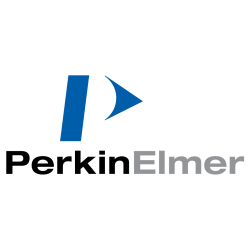BUILDING BLOCKS VENDOR CASE STUDY #2: Successes and Challenges of HL7 Data Exchange

PerkinElmer, Inc.
BACKGROUND
Newborn screening generates vast amounts of data that require continuous tracking. With effective information management, laboratories can increase process throughput and reduce costs. In response to this need, PerkinElmer, Inc. developed the world’s first laboratory information management system specifically focused on the needs of NBS programs. Specimen Gate® software is designed to simplify the data collection and workflow processes involved with receiving specimens, screening for abnormalities, managing patient information, generating specimen reports, and following up abnormal and unsatisfactory specimens.
Over the years, PerkinElmer has successfully implemented 10 electronic messaging data flows with NBS laboratories across North America. Based on these experiences, PerkinElmer has prepared a high-level summary of the successes and challenges that these implementations entail.
CHALLENGES
- NBS LIMS vendors may not have access to the end user result portal to view data sent from LIMS system. This access is important for end-to-end testing and validation.
- The National Library of Medicine Standard for Electronic Newborn Screening Result messages are known to the NBS community, but many outside organizations such as hospital IT vendors and Health Information Exchanges lack an understanding of and familiarity with this format.
- The NBS laboratory may not specify exactly what result data should be included in the electronic result message. By default, the NLM Standard is compiled to include all analyte, ratio, and disorder information, both quantitative and qualitative. After building the result message, the NBS laboratory may decide to only include data that appears on the printed patient report, resulting in customizations and additional validation.
- The NBS laboratory project manager does not prepare agendas, meeting minutes, or action items to maximize the efficiency of project meetings.
- Changes in project scope, such as committing to implement the NLM standard, then later deciding the standard does not meet NBS laboratory needs.
- Electronic result delivery to each hospital is difficult to configure and maintain by the NBS laboratory IT staff. A potential solution would be to only send results to a HIE, if available, and allow this entity to distribute electronic results to State hospitals and physicians.
- Custom message format that does not follow the NLM standard leads to unique configuration that may be more difficult to maintain and support long-term.
- The NBS laboratory does not have well-defined requirements on HL7 workflow and what data elements should and should not be included in the electronic message.
- The NBS LIMS vendor has limited access to development tools, restricted security access for development of the interface, or limited access to debugging tools for testing electronic messages.
- The NBS LIMS vendor does not have permissions to install the integration engine that is used to create and send electronic messages.
Solution
- Selecting a pilot hospital or small group of hospitals to receive the electronic result message helps to control scope and manage stakeholders.
- Order and result information workflows, connectivity and criteria are well-defined by the NBS laboratory.
- The NBS laboratory creates and executes a thorough test plan to validate all workflow and data exchange scenarios.
- The NBS laboratory project manager and IT staff are engaged and responsive throughout the project timeline.
- Utilization of an integration engine rather than a custom solution for electronic information exchange.
- Ability to have professional guidance and review from a nationally accepted and respected organization in the NBS community so that ALL electronic messages and workflows related to NBS adhere to a common standard.
In summary, active and engaged participation from NBS laboratory management and IT personnel are essential for a successful electronic data exchange project. Understanding data workflow and defining clear requirements at the beginning of the project are critical to keep the electronic message implementation on schedule. Changes to project scope and lack of support from the NBS laboratory or IT and partnering hospitals will lead to additional work efforts and extended timelines for all parties involved.